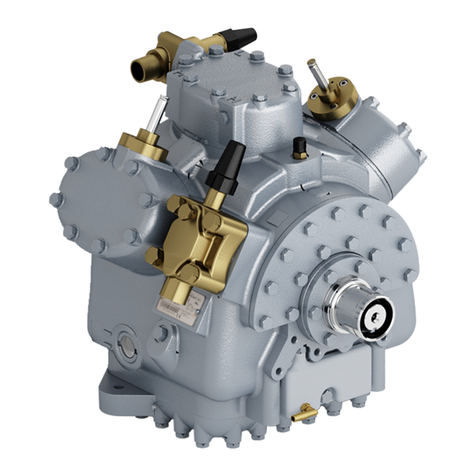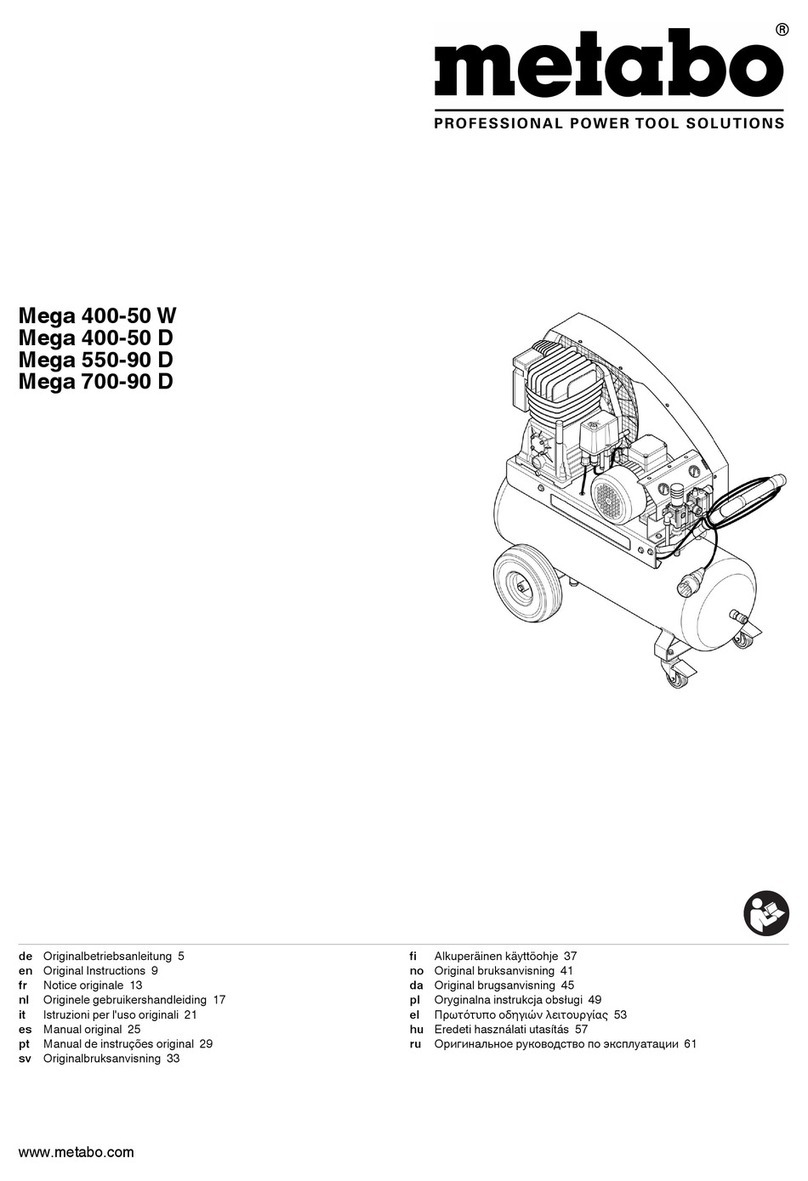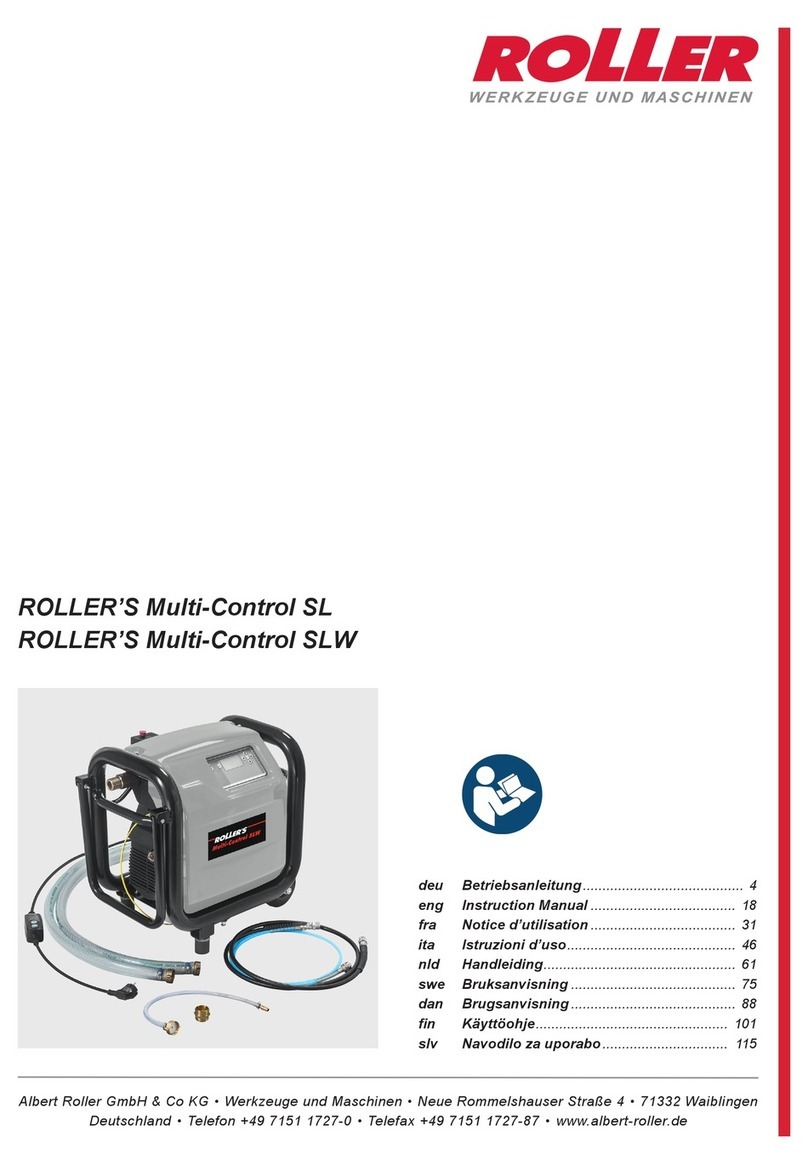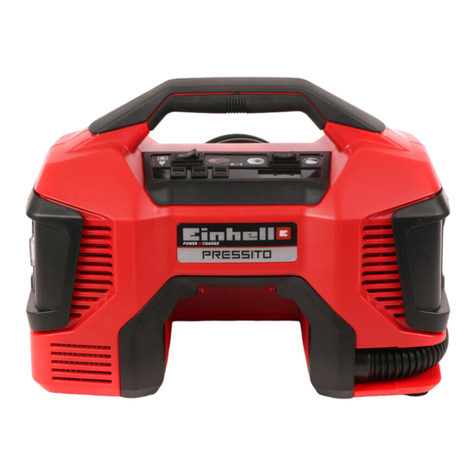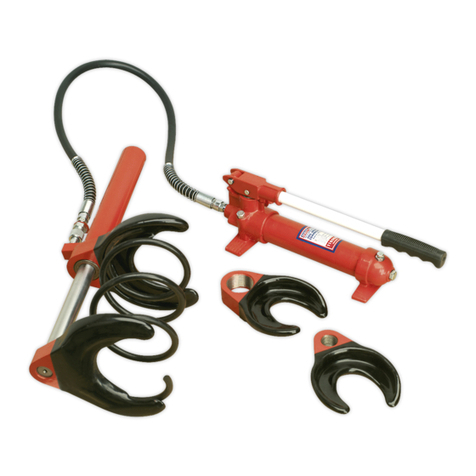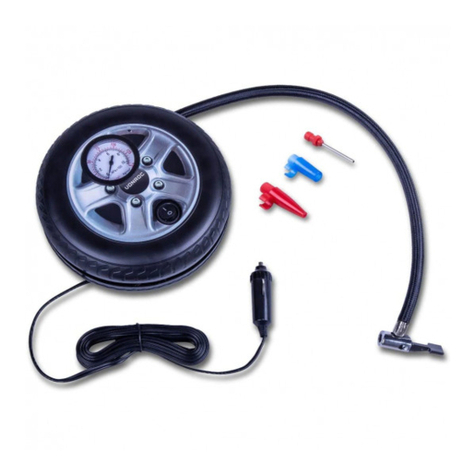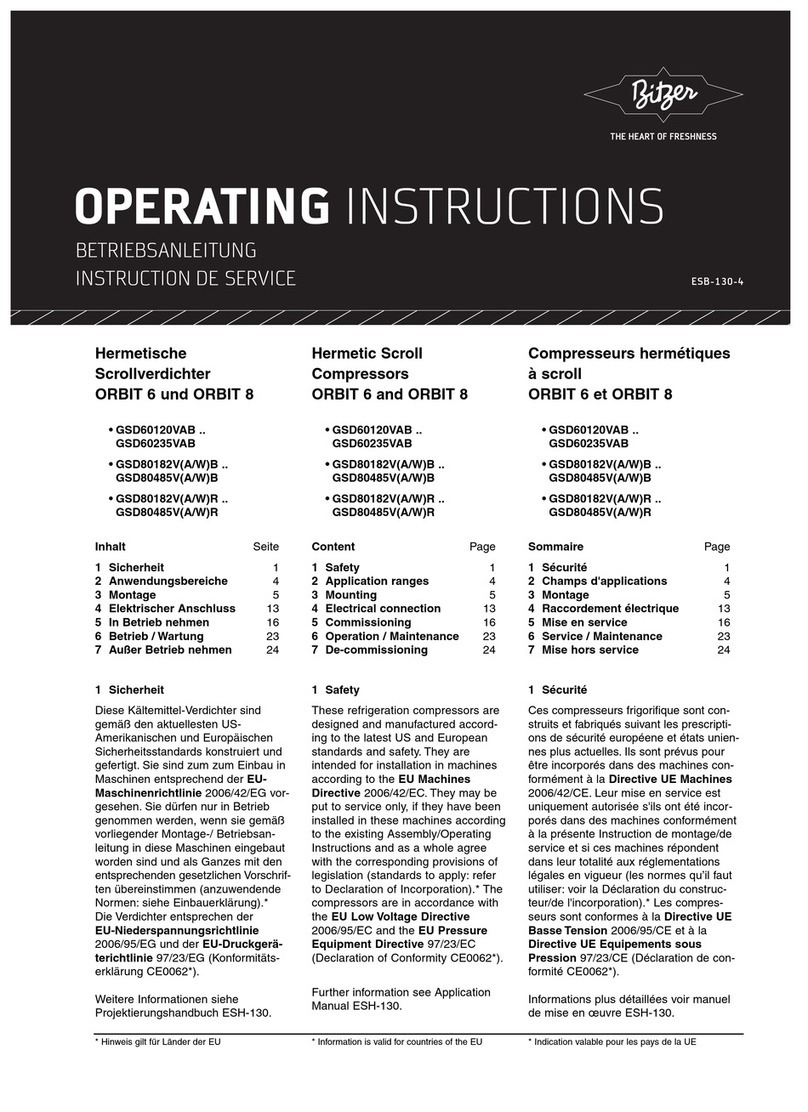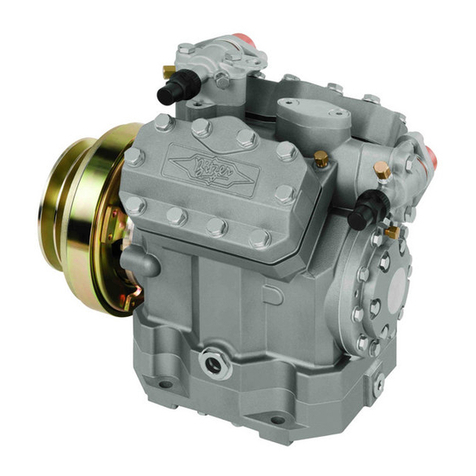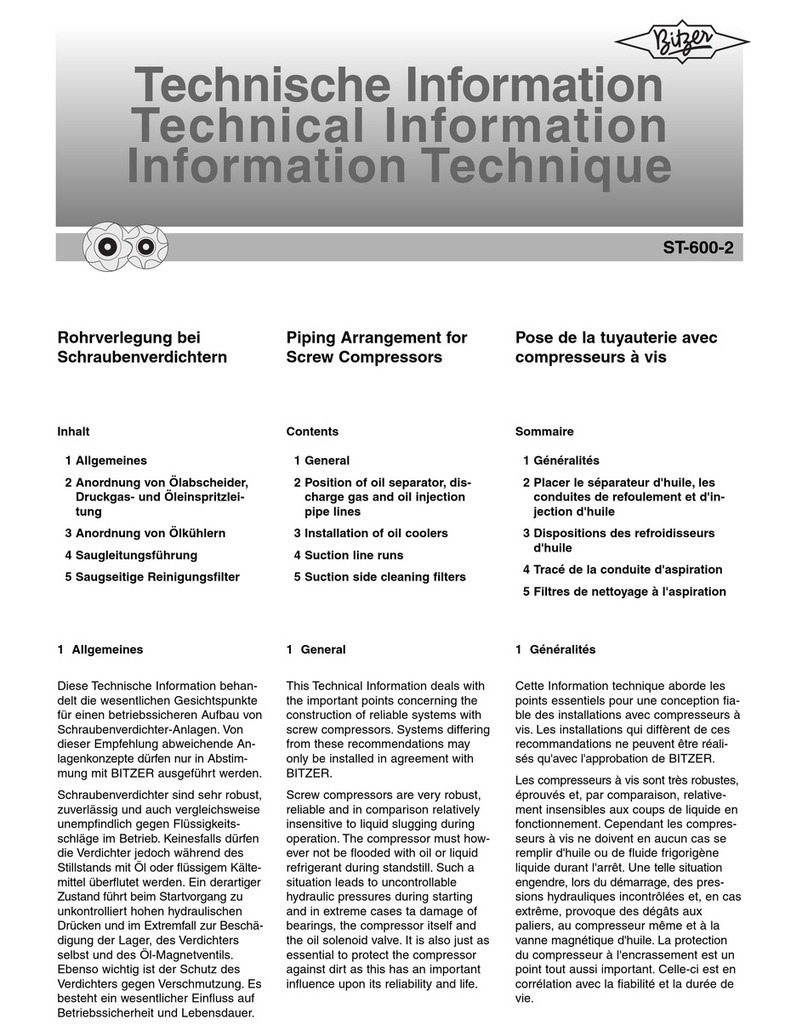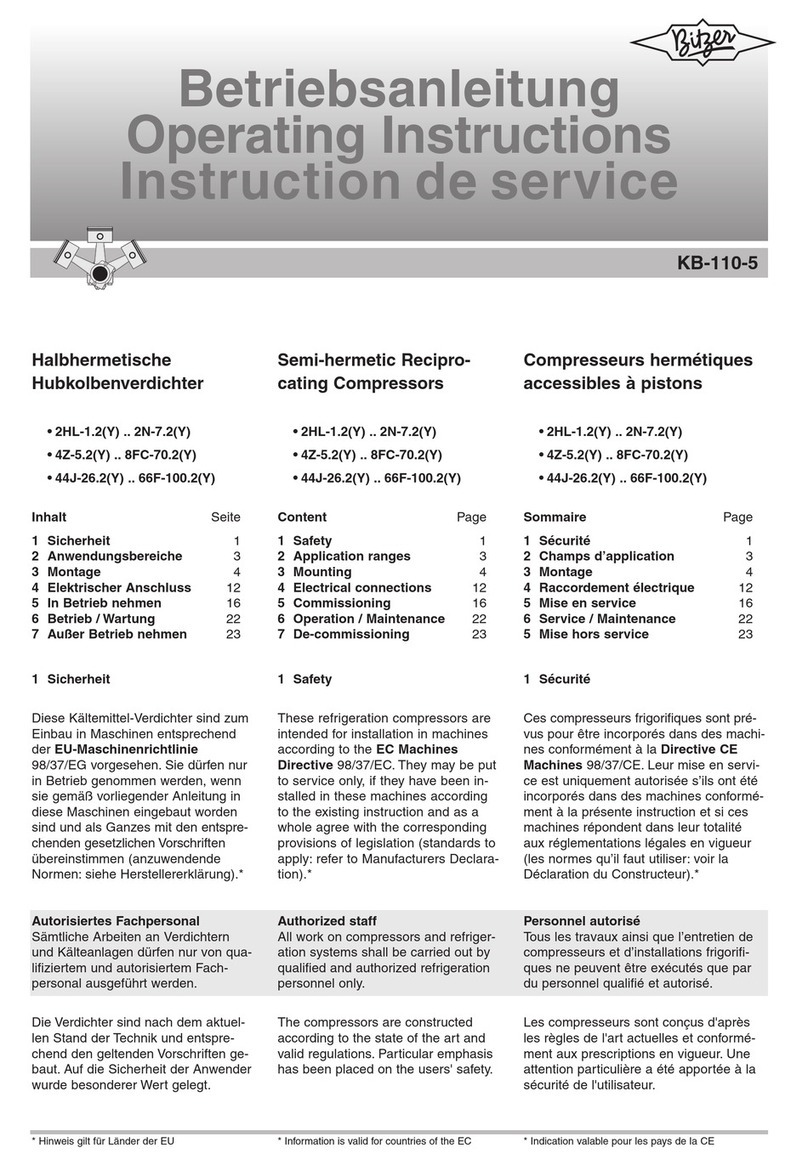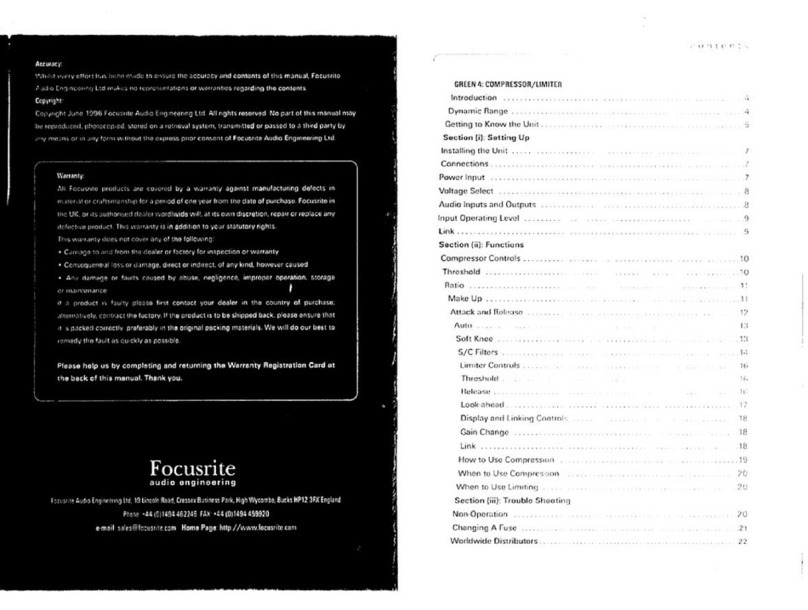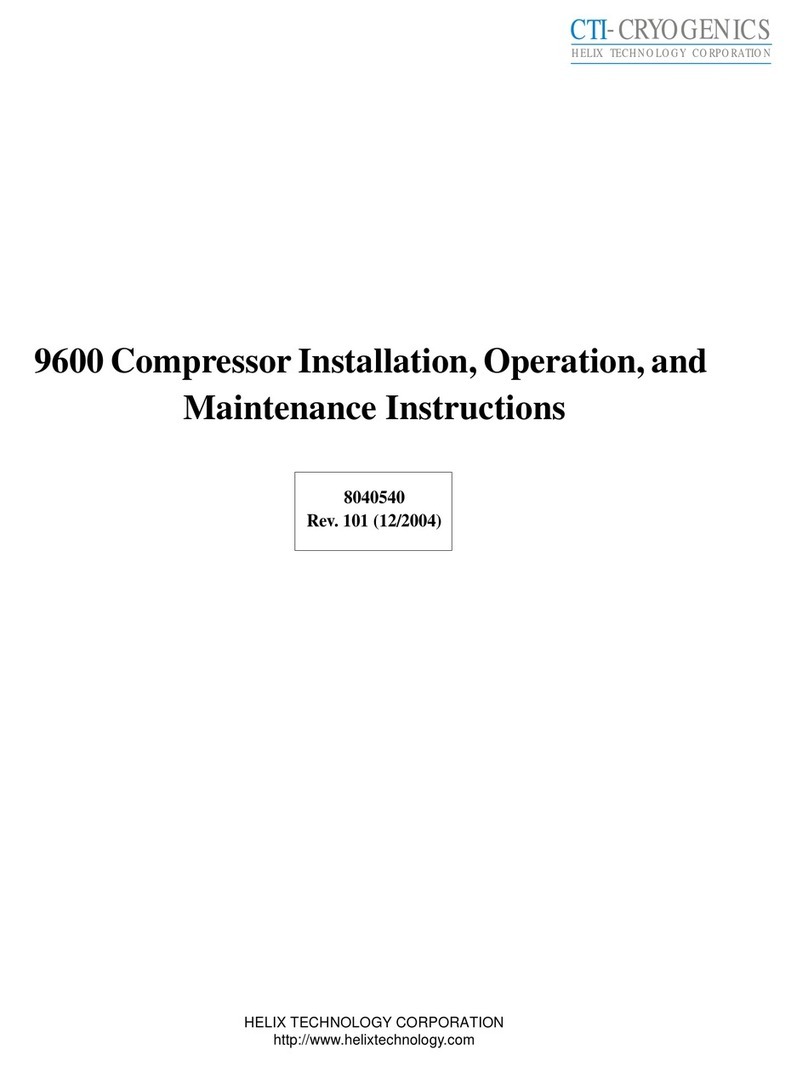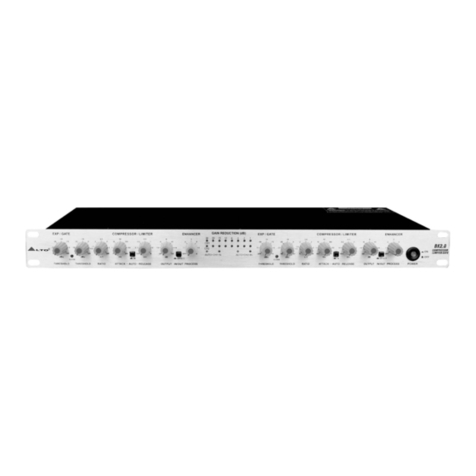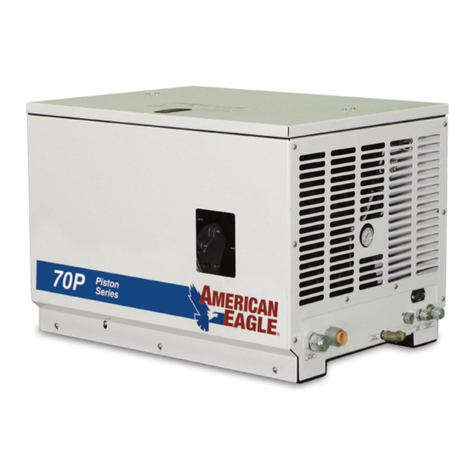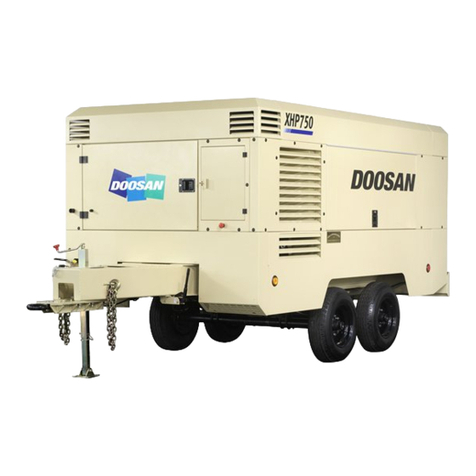11
2.4 Hydraulische Schaltung
Abbildung 3 zeigt das Aufbauprinzip
der hydraulischen Schaltung. Durch
Verstellen des Schiebers 7 wird das
Ansaugvolumen geregelt.
Ist der Schieber völlig zur Saugseite
hin geschoben (in Abbildung 3 nach
links), dann wird der gesamte Profil-
Arbeitsraum mit Sauggas gefüllt. Je
weiter der Schieber zur Druckseite
geschoben wird, desto kleiner ist das
Profilvolumen. Es wird weniger
Kältemittel angesaugt, der Massen-
strom ist geringer. Die Kälteleistung
sinkt.
Der Schieber wird durch einen
Hydraulikkolben gesteuert. Wenn das
Ventil CR4 geöffnet ist, steigt der Öl-
druck in der Druckkammer 3. Der
Schieber wird zur Saugseite hin ge-
schoben. Die Kälteleistung steigt.
Wenn das Ventil CR1, CR2 oder CR3
geöffnet ist, sinkt der Druck, der auf
den Hydraulikkolben wirkt. Durch das
Druckgas 6 wird der Schieber zur
Druckseite bewegt. Die Kälteleis-
tung wird geringer.
2.5 Verdichter-Start
Bei Stillstand des Verdichters ist das
Magnetventil CR3 geöffnet. Der Druck
im Hydraulikzylinder wird vollständig
abgebaut. Die Feder 5 (Abb. 3) drückt
den Schieber ganz zur Druckseite.
Beim Einschalten läuft der Verdichter
in entlastetem Zustand an. Bei Bedarf
wird das Ventil CR4 angesteuert, der
Schieber wird zur Saugseite hin ver-
schoben. Die Kälteleistung steigt bis
auf den vorgegebenen Lastzustand
durch Ansteuerung der Ventile CR1 ..
CR3.
2.6 Stufenlose Leistungsregelung
Die stufenlose Leistungsregelung
empfiehlt sich bei Systemen, die eine
hohe Regelgenauigkeit erfordern.
Regelungsprinzip siehe Abbildung 6.
Wenn der Ist-Wert innerhalb des ein-
gestellten Bereichs H liegt, ist der
Kältebedarf der Anlage unverändert.
Der Schieber muss nicht verstellt wer-
den. Es werden keine Magnetventile
angesteuert.
2.4 Hydraulic control
Figure 3 shows the design principle of
the hydraulic scheme. By moving the
slide 7 the suction gas flow is
controlled.
If the slide is moved totally to the suc-
tion side (in the figure 3 to the left),
the working space between the pro-
files is filled with suction gas. The
more the slide is moved to the dis-
charge side, the smaller becomes the
resulting profile volume. Less refriger-
ant is taken in. The mass flow is
lower. The cooling capacity decreas-
es.
The slide is controlled by a hydraulic
piston. If the valve CR4 is opened, the
oil pressure in the pressure chamber 3
increases. The slide is moved to the
suction side. The
cooling
capacity
increases.
If the valve CR1, CR2 or CR3 is
opened, the pressure on the hydraulic
piston decreases. By means of the
discharge gas 6 the slide is pressed
to the discharge side. The cooling
capacity is reduced.
2.5 Starting the compressor
During the off-period of the compres-
sor the solenoid valve CR3 is open.
The pressure in the hydraulic cylinder
is then released. The spring 5 (fig. 3)
pushes the slide to the discharge side
end position.
When starting the compressor, it is
unloaded. Valve CR4 is energized on
demand thus moving the slide to-
wards the suction side. The refrigerat-
ing capacity increases to the set load
condition by energizing the valves
CR1 .. CR3.
2.6 Infinite capacity control
Infinite capacity control is recom-
mended for systems where high con-
trol accurancy is required. Control
principle see figure 6.
If the actual value is within the set
control range H, the cooling demand
of the plant remains unchanged. Then
there is no need to move the slide. No
solenoid valve is energized.
2.4
Гидравлический привод системы
регулирования производительности
На рис. 3 показана принципиальная компоновка
гидравлической схемы регулирования. Расход
сжимаемого газа регулируется перемещением
золотника 7.
Если золотник полностью сдвинут к стороне вса-
сывания (на рис.3 влево до конца), то
межпрофильные пространства роторов полностью
заполнены сжимаемым газом. Чем больше
перемещается золотник в сторону нагнетания,
тем меньше становится суммарный рабочий объём
межпрофильного пространства роторов. Тем
меньше хладагента захватывается ими, и, тем
самым, уменьшается удельный массовый расход
хладагента. В результате снижается холодопрои-
зводительность компрессора.
Золотник через шток жёстко связан с
управляющим поршнем исполнительного
гидроцилиндра. При открывании электромагнитного
клапана CR4 начинает возрастать давление масла
в рабочей полости исполнительного цилиндра 3.
Золотник начинает перемещаться в сторону вса-
сывания, и холодопроизводительность компрессора
повышается.
При открывании электромагнитных клапанов
CR1, CR2 и CR3 начинает уменьшаться давление
масла в рабочей полости исполнительного цилиндра.
Под действием сжатого газа 6 золотник сдвигает-
ся в сторону нагнетания, и холодопрои-
зводительность компрессора понижается.
2.5 Запуск компрессора
В положении компрессора «выключен»
электромагнитный клапан CR3 открыт. При этом
давление масла в рабочей полости исполнительного
цилиндра рис. 3 отсутствует, возвратная пружина 5
сдвигает золотник в сторону нагнетания (вправо) до
упора. Kомпрессор при следующем включении
получается полностью разгруженным. Открывшись,
электромагнитный клапан CR4
заставляет золотник
сдвигаться в сторону всасывания.
Холодопрои-
зводительность компрессора повышается по
задаваемому режиму включением и выключением
электромагнитных клапанов CR1, CR2 и CR3.
2.6
виброгасители регулирование
производительности
Плавное регулирование производительности
рекомендуется системам, где требуется высокая
точность. Принцип плавного регулирования
производительности показан на рис.6.
Если текущее значение отслеживаемого
параметра находится в пределах
установленного диапазона Н, то холодопрои-
зводительность установки остаётся неизменной,
и нет никакой необходимости сдвигать
золотник, открывая электромагнитные клапаны.
SH-170-2 RUS




















